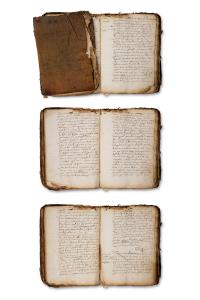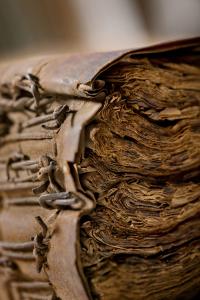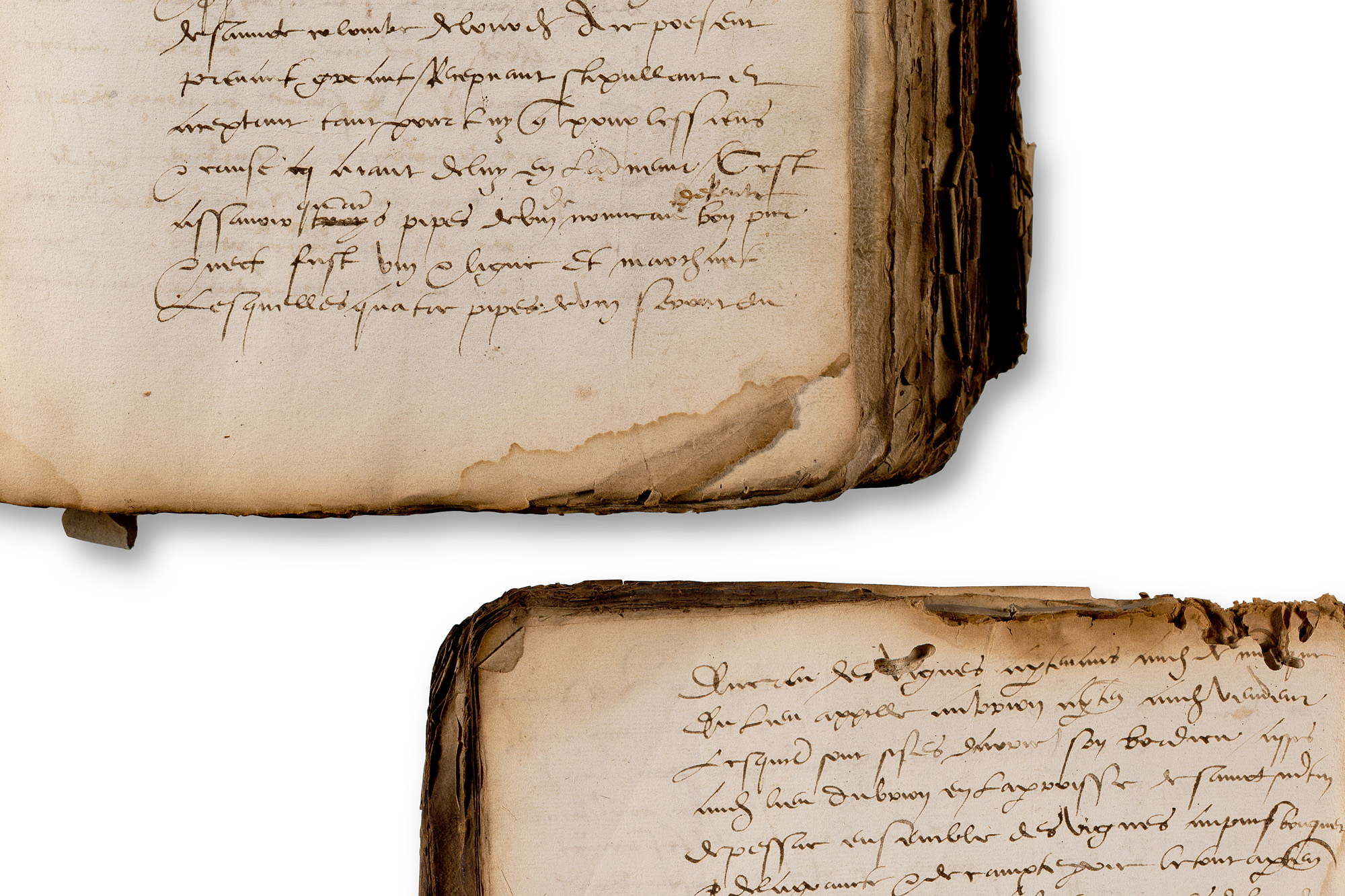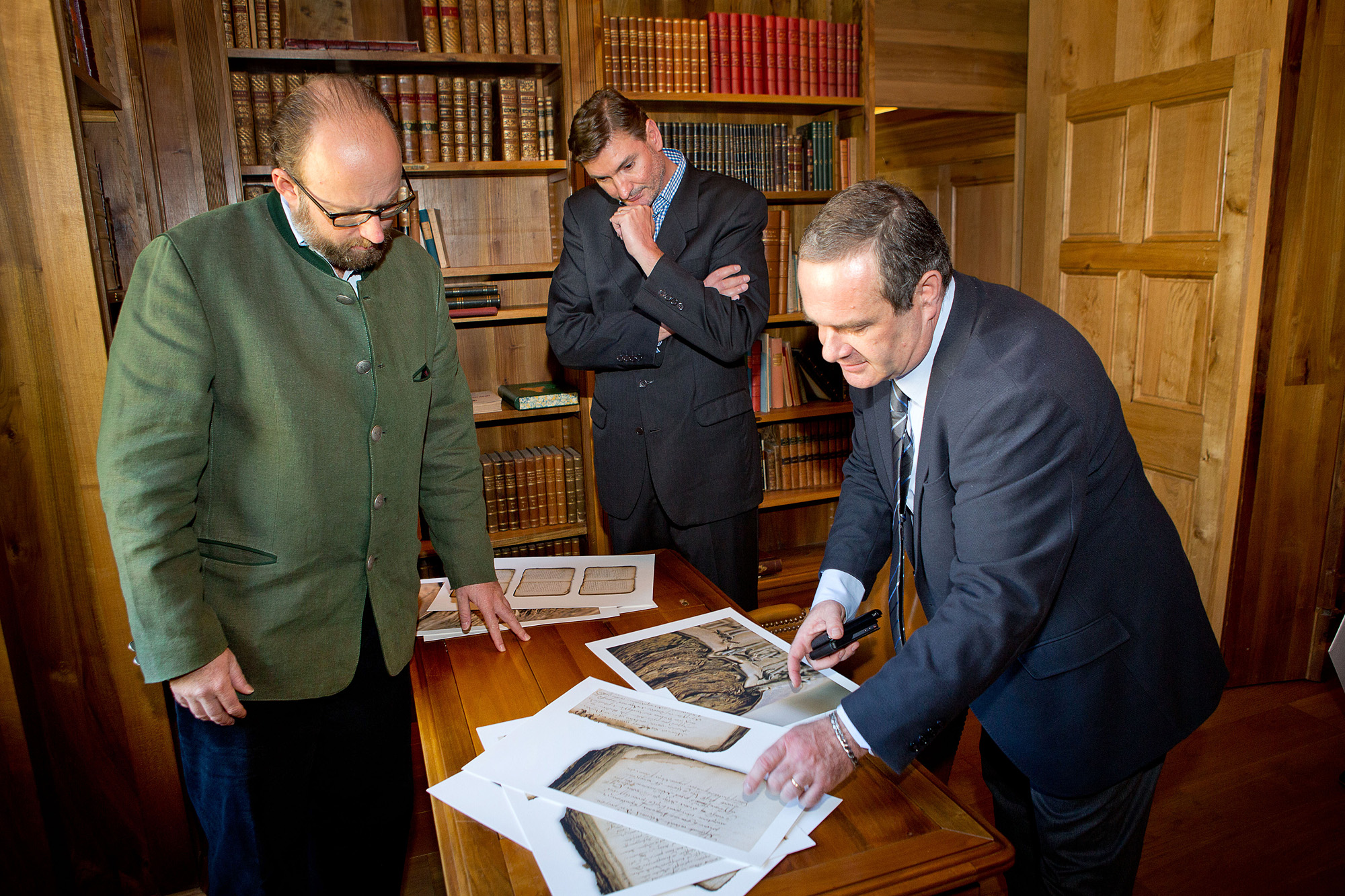THE First Growth! Château Haut-Brion
The Château Haut-Brion Historical Challenge: 1521, the winning mention
Paris, 2nd October, 2014, PRNewswire/- Domaine Clarence Dillon presents the big winner of the Château Haut-Brion Historical Challenge: the oldest written mention of Haut-Brion wine discovered to date now dates back to 1521!
In May 2013, Domaine Clarence Dillon launched a challenge: to discover a written mention of Haut-Brion wine prior to that of 1660, contained in the cellar book of King Charles II of England, the oldest known to date. This Historical Challenge was met!
From all of the submissions recorded, two authenticated mentions emerged from the past, or more precisely the beginning of the 16th century. The earliest mention discovered now dates back to 1521, in other words 139 years earlier!
The oldest text is a notarial instrument dated 21 January 15211, discovered in the Gironde Departmental Archives, which concerns a sale of a perpetual annuity in wine between Jean de Monque, a squire and lord of the locality of Monque, and Guilhem de Mailhois, bourgeois, merchant and sergeant of Bordeaux.
This sale is agreed for a sum of 400 Bordeaux francs (a sum that would be equivalent to a current purchasing power of over approximately €50,000). In repayment of this loan, Jean de Monque undertakes to deliver each year “four pipes of wine… from the place known as Aubrion” (equivalent to eight barrique casks or 1,800 l):
« quatre pipes de vin, seront du cru des vignes appartenant audit de Monque du lieu appelé Aubrion, appartenant audit vendeur. Lesquelles sont sises derrière son bourdieu assis audit lieu appelé du Brion, en la paroisse Saint-Martin de Pessac, ensemble des vignes de Pins Bouquet, de la Gravette et de Cantegrit, le tout appartenant audit seigneur de Monque, assis en Graves de Bordeaux et si cas était que ne vint aucuns fruits de raisins qui fussent pour satisfaire lesdites quatre pipes de vin de rente, bon, pur et net et marchand, le dit vendeur sera tenu lui en bailler d’autres aussi bon provenu du cru desdites vignes dessus déclarées ».
[“four pipes of wine, will be from the vineyard (cru) belonging to the said de Monque from the place known as Aubrion, belonging to the said seller. The said vines being found behind his smallholding established in the said place known as Le Brion, in the parish of Saint-Martin de Pessac, all of the vines of Pins Bouquet, la Gravette and Cantegrit, all belonging to the said lord of Monque, domiciled in Graves in Bordeaux, and if there are no grapes to fill the said four pipes of wine as an annuity – good, pure and clean and sellable, the said seller will be obliged to provide him with others that are just as good from the vineyard of the said abovementioned vines”.]
For the first time, Haut-Brion wine is associated with this extremely specific and prestigious term: Growth. Accordingly, from 1521, this text heralds an evolution spanning over three centuries that would take Haut-Brion to the rank of “First Growth” in the Gironde Wine Classification in 1855.
The second verified instrument is dated 1st September 15262. It is a sale of wine, made before a royal notary in Bordeaux: Esclarmonde de Lagarde, a Bordeaux woman, is selling to Pierre Gassies and Pierre Mulle, who are probably merchants, a quantity of two barrels of wine, equivalent to eight barrique casks: “two barrels of clairet or red wine from the vineyard of Haulbrion in Graves”.
On this date, the year’s grape harvest has not yet been gathered, so it therefore represents a sale on the vine. The quality of the harvest is not yet certain: if it is good, the wine will naturally be concentrated, with a red colour… if it is very average, the colour will be dark pink (clairet)… hence the possibility accepted in the contract.
The most remarkable feature of this instrument lies in the fact that in this business transaction the name of the product sold has been simplified: “wine from the vineyard of Haulbrion”. The reference to the vines and their owner is no longer even present in the trade name. From 1526, therefore, the fusion between the name of the vineyard – or terroir – and that of the wine produced there is already virtually complete. We are very close to the designation “vino de Hobbriono” in King Charles II of England’s cellar book in 1660.
This Château Haut-Brion Historical Challenge has therefore been extremely enriching for the history of this great vineyard and the wines of Bordeaux. We would like to thank and congratulate all those who researched and helped us to go back even further in time to discover evidence regarding the birth and development of what might be the oldest luxury brand in the world: Haut-Brion.
Domaine Clarence Dillon
Created in 1935, the family-owned and managed company, Domaine Clarence Dillon, has the unique privilege of producing five rare and exceptional estate wines: two red wines and two white wines from First Growth, Château Haut-Brion and its sibling Château La Mission Haut-Brion. Since the 2011 vintage, the company is also proud to represent one of the finest wines from Saint Émilion: Château Quintus.
In 2005, the Company created the Bordeaux Fine Wine Merchant, Clarence Dillon Wines, and launched Clarendelle, “Inspired by Haut-Brion”, Bordeaux’s first super premium luxury brand wine, thus testifying to the far-sighted spirit that has characterized Domaine Clarence Dillon from the onset.
As wardens of three mythical Estates, steeped in close to two millennia of history, the family company strives to have this deep heritage reflected in all of the wines produced under its name. Domaine Clarence Dillon combines tradition with innovation in order to extract the quintessence of an exceptional terroir and produce comprehensive families of authentic wines that are defined by their complexity and elegance.
For more information, please contact
Sabrina Ubinana-Fournier:
phone: +33 (0)1 40 73 87 23 /
mail: [email protected]
1Archives Départementales de la Gironde – 3E 6533 – January 24th, 1521
2Archives Départementales de la Gironde – 3E 9802 – September 1st, 1526










